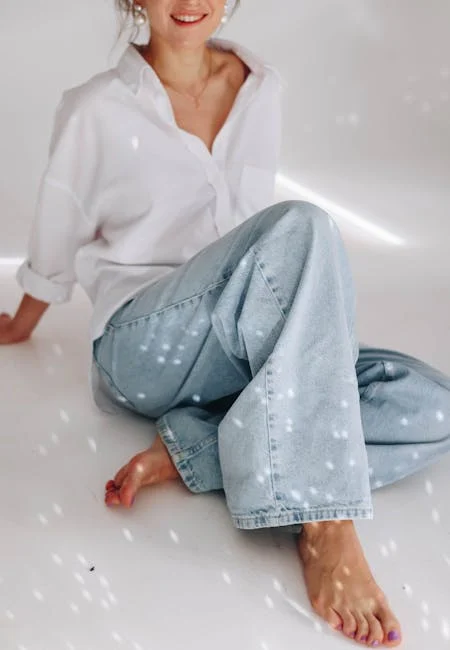and Comfort
Introduction
In today’s fast-paced world, prioritizing both style and comfort is no longer a luxury – it’s a necessity. Whether it’s clothing, furniture, or even the way we design our living spaces, the demand for products and experiences that offer both aesthetic appeal and physical well-being is higher than ever. This article explores the importance of balancing beauty and ease in various aspects of life, offering practical tips and insights to help you achieve the perfect harmony of style and comfort.
Clothing: Where Style Meets Ease
Choosing Comfortable Fabrics
The foundation of comfortable clothing lies in the fabrics. Opt for natural fibers like cotton, linen, silk, and wool. These materials are breathable, allowing air to circulate and preventing overheating. Consider these benefits:
- Cotton: Soft, breathable, and affordable.
- Linen: Lightweight, durable, and gets softer with each wash.
- Silk: Luxurious, smooth, and naturally hypoallergenic.
- Wool: Warm, insulating, and moisture-wicking.
Avoid synthetic fabrics that can trap heat and cause irritation, especially during warmer months. If you choose synthetic blends, look for those with a higher percentage of natural fibers.
The Importance of Fit
A well-fitting garment not only looks better but also feels more comfortable. Avoid clothing that is too tight or too loose. ill-fitting garments restrict movement and can cause discomfort throughout the day. Consider these tips:
- Know your measurements: Regularly measure your bust, waist, hips, and inseam to ensure accurate sizing.
- Consider body type: Choose styles that flatter your body shape.
- Try before you buy: Whenever possible, try on clothing before purchasing to ensure a comfortable fit.
- Consider stretch fabrics: Elastane, spandex, and other stretch fabrics can provide greater freedom of movement.
Comfortable Footwear Choices
Footwear is crucial for overall comfort. Ill-fitting shoes can lead to foot pain, back pain, and other health problems. Prioritize shoes that offer good support, cushioning, and breathability. Look for:
- Arch support: Essential for maintaining proper foot alignment and preventing pain.
- Cushioning: Provides shock absorption and reduces impact on joints.
- Breathable materials: Leather, mesh, and other breathable materials help prevent moisture buildup and keep feet cool.
- Wide toe box: Allows toes to move freely and prevents cramping.
Home Décor: Creating a Relaxing and Stylish Space
Comfortable Furniture Selection
Furniture should be both aesthetically pleasing and comfortable. Invest in pieces that provide adequate support and cushioning. Consider these factors:
- Sofa depth and height: Choose a sofa with a comfortable depth and height that allows you to sit comfortably with your feet on the floor.
- Cushion fill: Feather, down, and foam are common cushion fills. Each offers a different level of comfort and support.
- Upholstery: Choose durable and comfortable upholstery materials like cotton, linen, or microfiber.
- Ergonomic chairs: Invest in ergonomic chairs for your home office or dining area to promote good posture and reduce strain.
Incorporating Soft Textures
Adding soft textures to your home can create a more inviting and comfortable atmosphere. Consider these options:
- Throws and blankets: Drape soft throws and blankets over sofas and chairs for added warmth and comfort.
- Rugs: Place soft rugs underfoot to add warmth and cushioning to hard floors.
- Pillows: Use decorative pillows in various sizes and textures to add visual interest and comfort to sofas and beds.
- Curtains: Choose soft and flowing curtains to add privacy and soften harsh light.
Optimizing Lighting
Lighting plays a significant role in creating a comfortable and relaxing atmosphere. Use a combination of natural and artificial light to create a warm and inviting space. Consider these tips:
- Maximize natural light: Open curtains and blinds during the day to let in as much natural light as possible.
- Use warm-toned light bulbs: Warm-toned light bulbs create a more inviting and relaxing atmosphere.
- Incorporate dimmer switches: Install dimmer switches to adjust the brightness of lights and create different moods.
- Layer lighting: Use a combination of ambient, task, and accent lighting to create a well-lit and visually interesting space.
Lifestyle: Prioritizing Well-being
Mindful Practices for Comfort
Creating a comfortable lifestyle involves more than just material possessions. Mindful practices can significantly contribute to overall well-being. Consider these techniques:
- Meditation: Regular meditation can reduce stress and promote relaxation.
- Yoga: Yoga combines physical postures, breathing techniques, and meditation to improve flexibility, strength, and mental clarity.
- Spending time in nature: Spending time in nature can reduce stress, improve mood, and boost overall well-being.
Creating a Comfortable Sleep Environment
A good night’s sleep is essential for overall health and well-being. Create a comfortable sleep environment to promote restful sleep. Consider these factors:
- Comfortable mattress: Invest in a comfortable mattress that provides adequate support and cushioning.
- Supportive pillows: Choose pillows that support your head and neck in a comfortable position.
- Dark and quiet room: Create a dark and quiet room to promote restful sleep.
- Optimal temperature: Maintain a cool and comfortable temperature in your bedroom.
Conclusion
Achieving the perfect balance of style and comfort is a continuous journey, not a destination. By prioritizing comfortable fabrics, well-fitting clothing, supportive furniture, soft textures, and mindful practices, you can create a life that is both aesthetically pleasing and physically comfortable. Remember that true style reflects your inner confidence and well-being, making comfort an essential element of self-expression and overall happiness. So, embrace the power of “and” – choose style and comfort, and create a life that truly reflects your values and priorities.














Post Comment